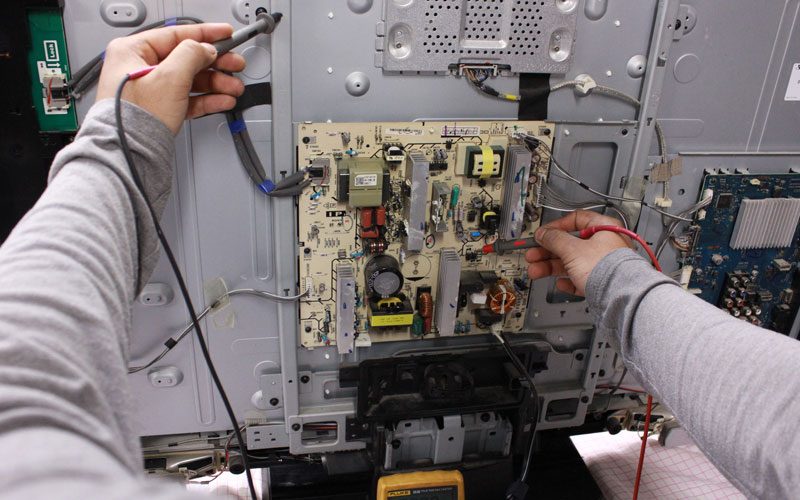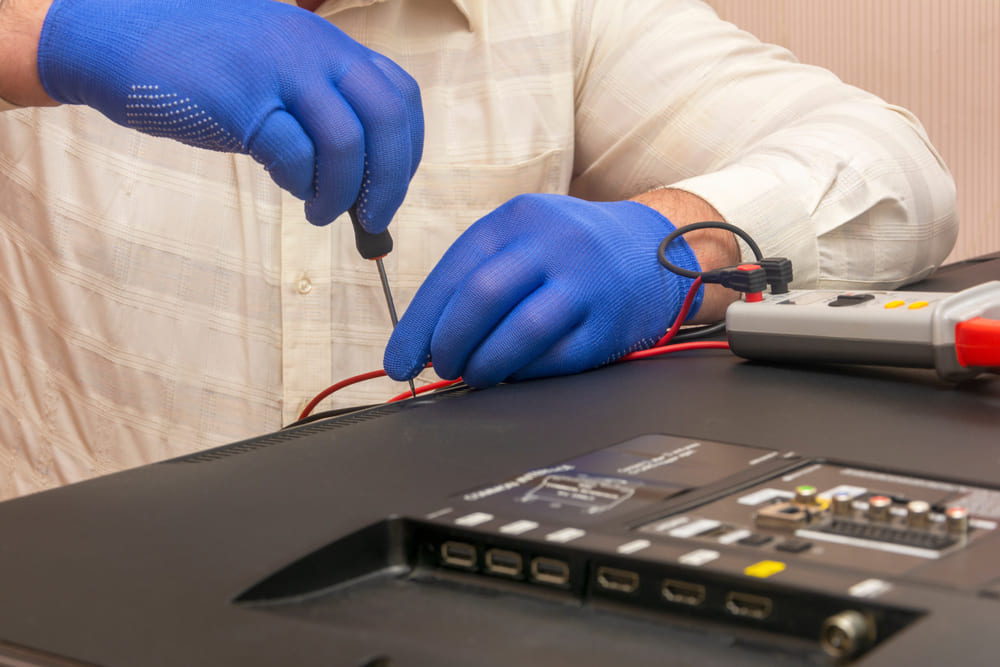There are a lot of upsides to fixing a TV on your own, including the fact that you can save a lot of money. But there are risks involved in trying to solve your own technical problems. When repairing televisions, the risk of electric shock is an individual’s greatest hazard.
Electric shock occurs when any part of your body touches a live conductor while the voltage is high. Numbness, tingling, loss of mobility, weakened muscles, and tingling are all possible side effects of a severe shock to the neurological system. In addition, electric shock frequently results in burns and other flesh wounds.
Nerve injury can be either short- or long-term, depending on the magnitude of the shock. Electric shock can be fatal if you’re not careful.
Create a plan
Never go into an electronic repair job thinking you can “wing it.” Before beginning the process, it is recommended to establish a comprehensive strategy outlining the steps you want to take to fix the device.
If you take the time to get ready, you won’t have to fumble around and possibly make a mistake. If you take the time to lay out a strategy, you can head off any potential pitfalls throughout the repair process before they even start.
Unplug
Important TV repair safety advice includes turning off the TV’s power and other electrical accessories. One of the easiest ways to avoid getting a shock from an electrical outlet is to do this. It’s not enough to just turn off the TV; you must also remove it from the wall outlet.
Batteries should be removed from electronics whenever possible before use. With the huge and strong capacitors used on flat-screen TV power supply boards, this precaution is extremely important when operating these devices.
Choose your tools wisely
Choosing the right instruments is crucial before beginning any kind of repair procedure. You risk hurting yourself, breaking your TV, or doing even more harm if you try to fix it without the proper tools. In addition to ensuring that you have the right tools for the job, you also need to check to see that they are in good working order.
Dress for the occasion
Putting on the right clothes is necessary before commencing any repair work. When repairing a television, the clothes you wear or don’t wear might significantly impact your safety. Listed below are tips for appropriate attire to ensure your safety.
What not to wear:
- Loose clothing
- Dangly jewelry
Essential clothing to wear:
- Rubber gloves
- Rubber shoes
- Safety glasses
- A hair tie (if you have long hair)
Work Area Safety Tips
- When dealing with delicate electrical wires and components, good lighting is essential. Bad decisions, such as accidentally cutting off a wire or changing the wrong part, are easy to make in a dimly illuminated workplace. That’s why it’s crucial to constantly have a bright light over your workspace so that you can see every part of the TV properly.
- It’s possible to injure yourself if you don’t have enough room to work safely while making repairs. Consequently, ensure you give yourself plenty of breathing room around your desk. In the event of an electrical shock, you’ll be able to disconnect from your equipment if you follow these precautions swiftly. When working on machinery in a public place, it may be necessary to erect a makeshift fence to keep onlookers at bay.
- You should never leave the equipment you’re servicing unattended—especially if it’s open or any cables are exposed. Leaving an electronic device in a delicate state can lead to serious accidents such as fires or electric shocks if something short-circuits or if someone accidentally touches it.
- Capacitors and other energy storage devices should never have more than one hand touching them at a time. To avoid creating an electrical channel from both hands to your heart, keep your non-work hand away from the apparatus. Keep your free hand in your pocket so you won’t be tempted to use both hands on the smartphone.




